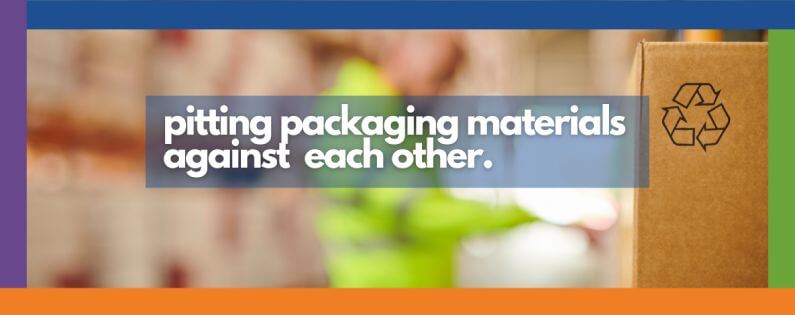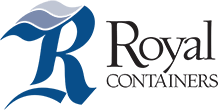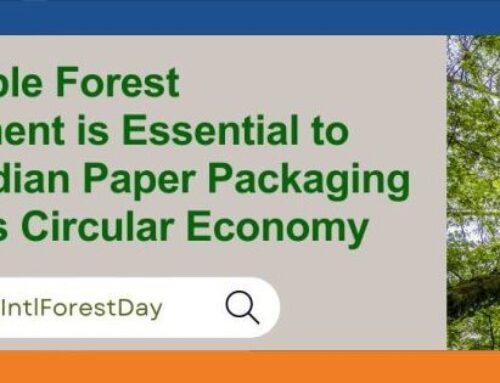Pitting Packaging Materials Against Each Other Misses the Bigger Picture

Article By Rachel Kagan | This article was originally published on ppec-paper.com.
Recent media articles on the potential of paper packaging to replace some of the single-use plastic items being banned in Canada, such as shopping bags and take-out food containers, miss the bigger picture of waste management and consumption in Canada.
Some articles have shared concerns raised by some environmentalists about shifting from plastic to paper packaging materials, but they miss providing fact-based information on how paper packaging is made, how forests are managed in Canada, the function of packaging, the rise of consumption, and the role of the consumer.
The major paper packaging grades made in Canada – which include containerboard (used to make corrugated cardboard boxes), boxboard (e.g., cereal or shoe boxes), and Kraft paper (used for bags and sacs) – are made from a highly recyclable and renewable material that is used repeatedly through the process of recycling.
And yet some articles refer to paper packaging as “single-use,” but on average, paper packaging fibres can be recovered and reused at least 5-7 times.
Focusing on the term “single-use” can miss the point about the larger issues surrounding waste management and consumption, and divert attention away from the federal government’s overarching goal of reducing plastic pollution.
In essence, all packaging materials – be it glass, metal, plastic, or paper – can be considered single-use, but it’s clear that some are more successfully recycled than others. Paper packaging is one of those successful examples. It has an established recycling system and end markets in place to capture used paper packaging so that those materials can be recovered and recycled to make new paper packaging products again and again.
While most paper packaging made in Canada is produced with recycled content, the paper fibres it was originally made from came from a tree. However, the Canadian paper packaging industry doesn’t use much in the way of freshly cut trees, and the little that is harvested must be successfully regenerated by Canadian law.
Some of the articles refer to deforestation without explaining what that means. There is an important distinction between deforestation and harvesting. Deforestation is when forest land is permanently cleared, with trees being removed so that the land can be used for something else. Harvesting, forest fires, and insect infestations do not constitute deforestation, since the affected areas will grow back.
The Canadian government conserves and protects its forests through strict laws and science-based sustainable forest management practices, which stipulate that all areas harvested on public land (94% of Canada’s forests are on public land) must be reforested, either by tree replanting or through natural regeneration (which occurs when new seedlings or sprouts are produced by fallen trees).
In addition, paper fibres used by PPEC member mills are verified to be responsibly sourced by independent, third-party forest certification organizations such as the Sustainable Forestry Initiative (SFI), Forest Stewardship Council (FSC), and the Canadian Standards Association (CSA Z809).
While the purpose of some of these media articles is to share environmental concerns surrounding various packaging materials, the articles do not provide information about the function of packaging, or the proliferation of packaging, which should be recognized in any story about packaging.
The function of packaging is to protect its contents, keep the product safe, facilitate transportation along the supply chain, and provide information to the consumer. In some cases that includes mandated information (e.g., ingredient and nutrition labelling, storage information, product use, expiration dates, and bilingual requirements).
There is also the reality of the world we live in today that didn’t exist 20+ years ago. It is undeniable that the use of packaging has surged as consumer shopping and dining habits have changed rapidly. The rise of e-commerce and online shopping, along with the increased use of food delivery services, meal kits, and prepared meals in grocery stores, have seen an exponential increase in packaging and in waste.
It’s clear that consumers want convenience but there are trade-offs in society’s decisions. We all have choices we make when making purchasing decisions, just as we have choices in managing our waste.
Everyone has a role to play in minimizing waste and diverting recyclable materials from landfill – businesses that make and sell products and packaging, waste management industry (recyclers, haulers, MRFs), and consumers. Ultimately it is the consumer who decides how to treat their waste and they need to do their part of properly cleaning and sorting their recyclables from their waste and organics to ensure everything that can be recycled is recycled.
Yes, the federal government’s plastics ban will see businesses shift to other packaging alternatives, including paper-based packaging, and our industry will look to meet the demand as needed, creating paper packaging products that are responsibly certified, sustainable, and recyclable.
As the national association representing the environmental interests of the Canadian paper packaging industry, we will stand by our industry and work to communicate the facts about how paper packaging is made. Our industry has relied on recycled content as its feedstock for decades, making investments in recycling equipment, and buying back high-quality old corrugated cardboard and used paper packaging to ensure they have a good supply of recycled paper fibres. Using recycled content is an inherent part of the Canadian paper packaging industry’s business model.
When media articles narrowly focus on one material over another, they miss the opportunity of educating and informing the public on the bigger picture of how waste is managed, the proliferation of consumption, and how we all have a role to play in minimizing waste.





Leave A Comment